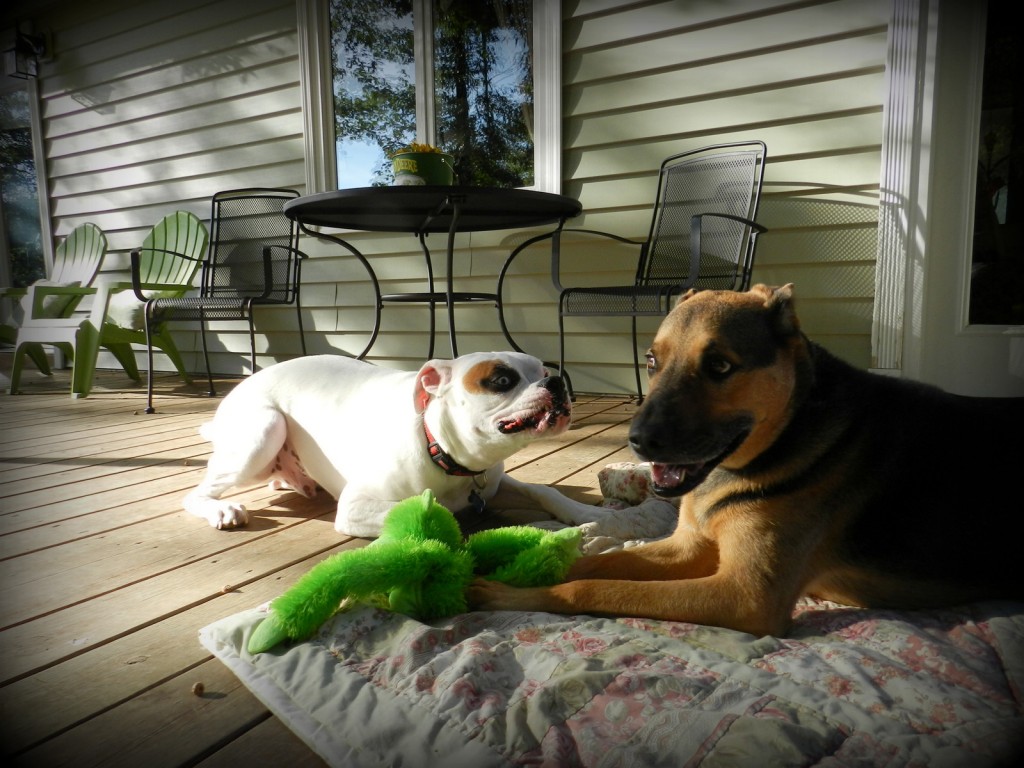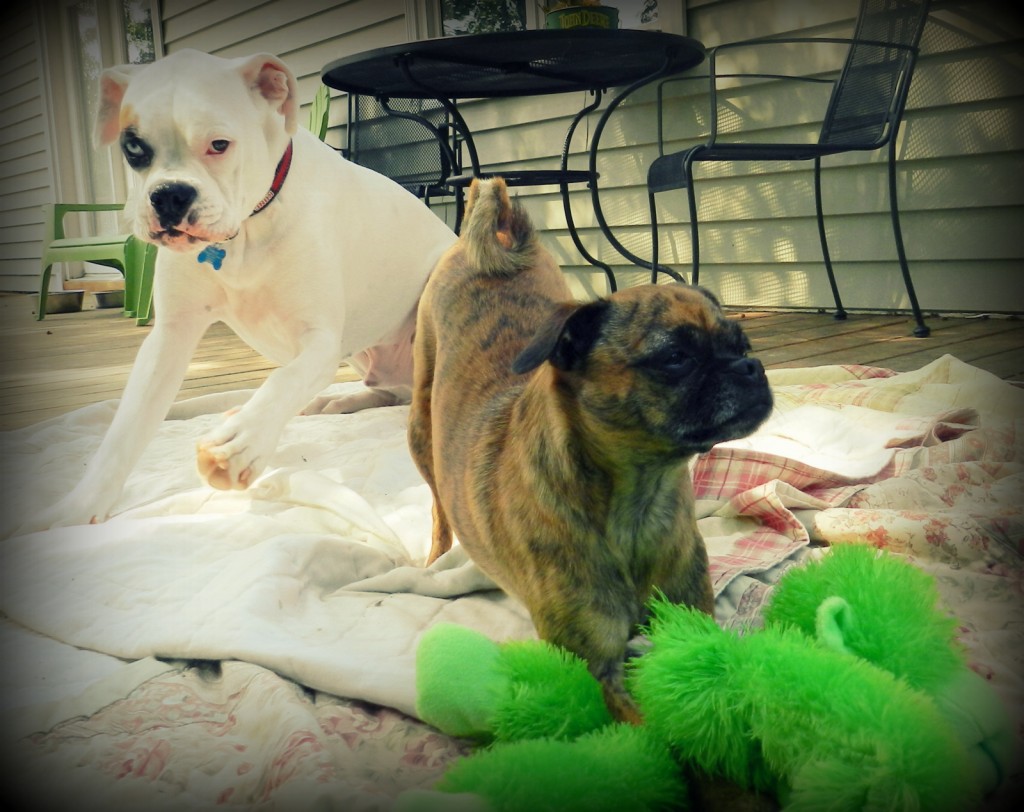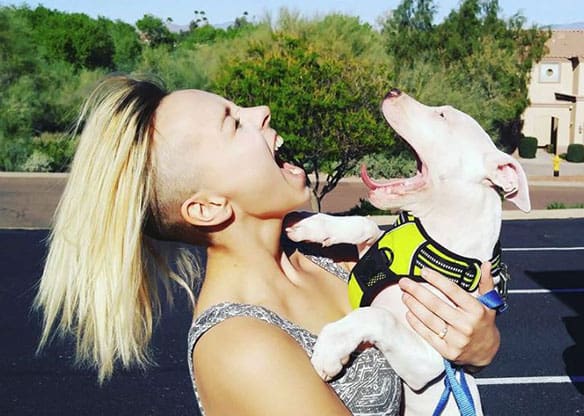Since we have five dogs here on the farm at our Deaf Dogs Rock office and we train both of our deaf dogs in positive reinforcement clicker training (instead of a clicker we use and open flash of the hand or a thumbs up to mark the right behavior), I wanted to share with all of you a great article written by Hannah Branigan on clickertraining.com on How to Prevent Resource Guarding in Multiple – dog Households. I get a lot of emails asking me about resource guarding so I wanted to take this opportunity to share Hannah’s article with all of you to help you figure out a way to make a peaceful, non-stressful home front with your dogs. Happy training! ~ Christina Lee – Deaf Dogs Rock
Above photo by: Christina Lee for DeafDogsRock.com – Deaf dog Nitro with Bailey our German Shepherd who loves to guard her toys so we have removed the “high value” toys from our doggy toy box.
How To Prevent Resource Guarding in a Multiple-dog Household by Hannah Branigan
Stealing and guarding—from whom?
Resource guarding among dogs is an extremely common and normal behavior. Dogs are pre-programmed not to want to share valued resources with others. For pet dogs, resources may include food, toys, or even the owner’s attention. In most households, resource guarding is limited to simple communication, but sometimes the behavior can escalate in frequency or intensity and injuries can occur. If you are ever concerned about aggressive behavior in your dog, related to resource guarding or not, it is best to contact your vet or other qualified professional for help before proceeding on your own.
While there are many protocols to reduce conflict in dogs that guard resources from their humans, guarding from other dogs presents a unique set of challenges. However, the principles for working with a dog that guards resources from humans and a dog that guards resources from dogs are basically the same. The emotion underlying the behavior is usually fear.
For animals in the wild, keeping or losing a meal can be the difference between life and death. So even though beloved pets are never in danger of starving (far from it!), the instinct to protect valuable resources is still intact. The goal of any training method is to reduce or eliminate the fear and conflict so that the dog feels more relaxed with a resource. Using positive reinforcement and counter-conditioning it is possible to change a dog’s emotional response and motivation. As a result, the behavior itself goes away.
Photo by: Christina Lee for DeafDogsRock.com. Pictured: Nitro when he was a puppy and our small dog Tallulah. Nitro learned to “leave it” and also to share at a very early age.
Steps to success
The main difference between a dog guarding from people and a dog guarding from dogs is that most of the time the human doesn’t actually want the slimy, old, rawhide resource, but most of the time the other dog does want it! Working with two dogs in a household, there are two training tasks to address. The first is to teach the guarding dog to feel more relaxed when approached, and the second is to teach the approaching dog not to steal other dogs’ belongings.
The first step in modifying resource-guarding behavior is to use good management strategies to prevent the undesired behavior. Practice makes perfect! Make a list of items, spaces, or situations that are likely to provoke the dog’s guarding behavior. Then, either change the environment to eliminate the opportunities, or eliminate the dog’s access. This may mean removing treasured toys, restricting access to certain rooms or furniture, confining the dogs separately during feeding times, and other management strategies. Crates, baby gates, and pens are great tools that help control your dog’s space and prevent undesirable behaviors. Note that in some cases dogs may have to be completely separated except during training times.
To read Hannah Branigan’s entire article on Resource Guarding, please click here.









